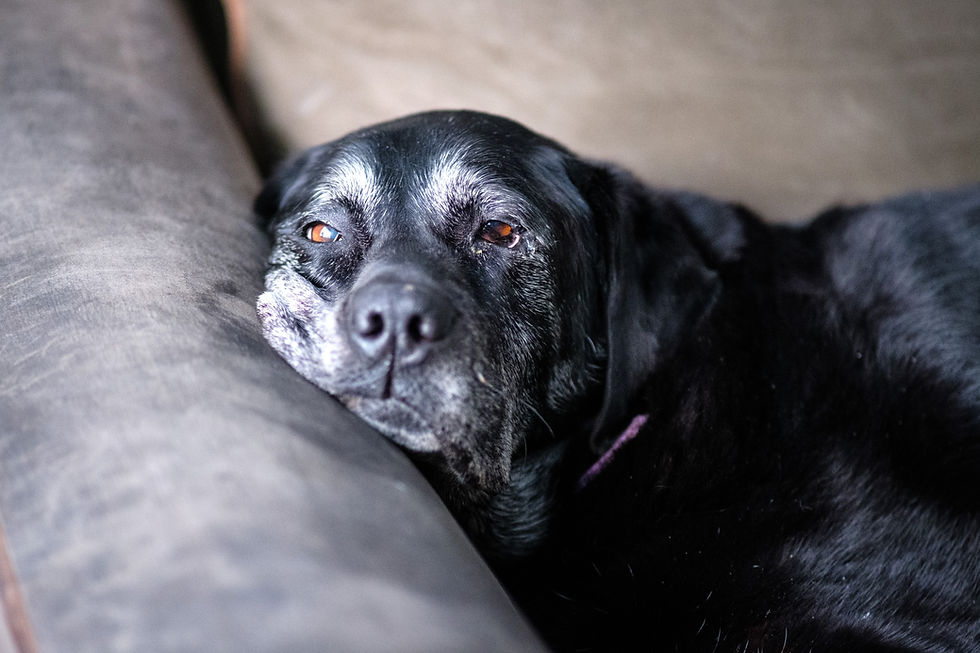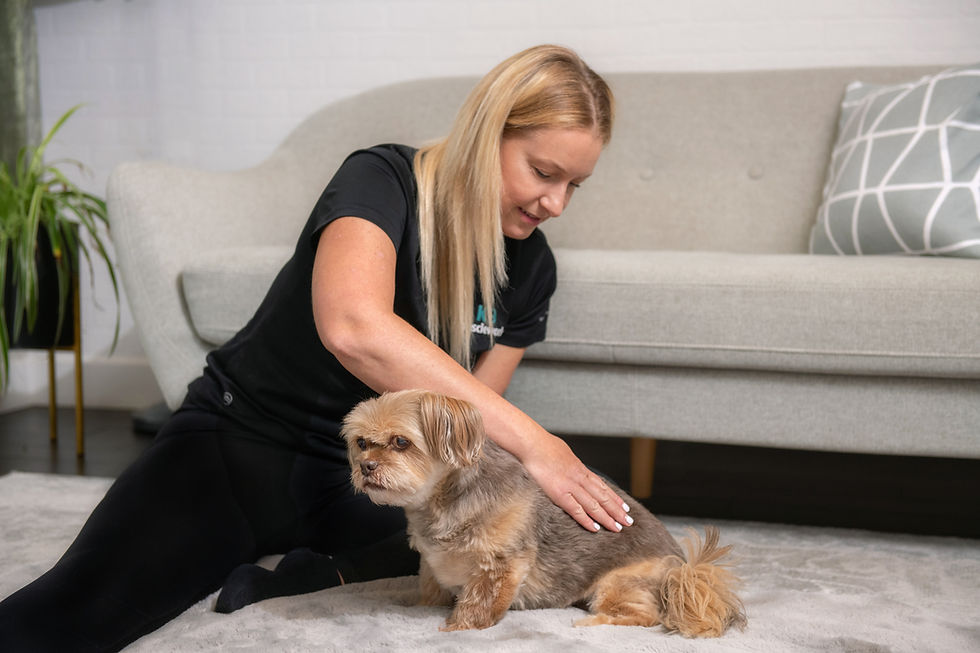Do Dogs Like Massage?
- K9MuscleWorks

- Sep 27, 2023
- 2 min read
Updated: Oct 13, 2023
Canine Comfort: Do Dogs Really Love Massages?
Discover the reasons why dogs often find massages to be a source of comfort and well-being, and how this simple practice can benefit their physical and emotional health.
Dogs typically crave touch and attention and therefore really enjoy massage. The pressure applied in massage and the techniques used vary from dog to dog as every dog is different and every dog has different preferences just like us! One challenge we face with having dogs is that they don’t actually verbally talk so determining what they want or don’t want is a matter of looking for telltale signs that help figure that out.

Benefits of Massaging Your Dog
Decreases stress and anxiety: Incorporating regular massage sessions in your dog's wellness plan can help alleviate stress and anxiety over time by teaching the dog to relax, trust and help build their confidence.
Helps alleviate pain and discomfort: Massage will help improve muscle tone, movement and ease discomfort. Dogs in palliative care can also benefit from massage as it releases endorphins to help reduce the feeling of pain.
Improves circulation and lymphatic flow: Good circulation and lymphatic flow promotes healthy blood flow, oxygen and nutrients throughout the body. The body expels any metabolic waste away from muscles and organs. This helps your dog avoid certain health issues like hypertension or edema.
Aids in the recovery and healing process: With dogs that are recovering from injury or surgery, massage helps the rehabilitation process, aids in preventing re-injury and decreases associated pain.
Helps find abnormalities to potential issues: A canine massage therapist will thoroughly go over your dog's body recognizing what’s normal and what’s not. Regular monthly massage can be a part of early detection for your dog's health and longevity.
Signs That Your Canine Is Enjoying It
The speed of your dog's breathing pace could be a sign of stress or relaxation. Faster, heavy breathing could be pain or anxiousness. Slower, closed-mouth breathing is usually a sign of relaxation and complete trust. A big sigh is usually a release both physically and mentally for the dog and a sign the dog is truly enjoying their session.
Soft, relaxed eyes and ears are also a good sign that your dog is enjoying their massage.
We often see a dog yawning during their session. This could be stress or a release, if all other signs point to relaxation, it’s most likely the yawn is also a release and pure bliss.
Sometimes a dog is in so much soft tissue pain whether it’s chronic or acute, that they don’t want to be touched. This is where it is important to seek the advice of your veterinarian to determine what the cause is and then a course of action for pain management which could include medication as well as multi-modal treatments.
Safety Considerations When Considering Dog Massage
There are of course a few contraindications to massage which include pregnancy, open wounds, infection, fever, cancerous tumours and skin issues.
Schedule a session today and give your dog the gift of well-being. Discover firsthand the joy and comfort that massage can bring to your beloved companion.




Comments